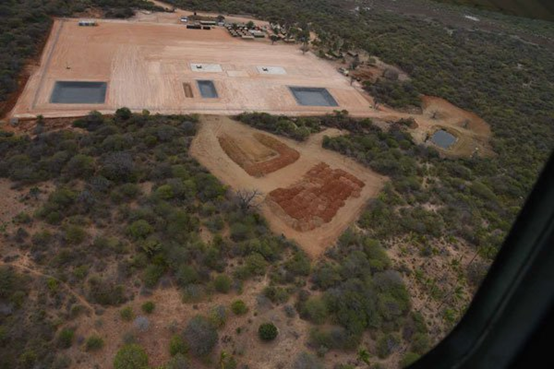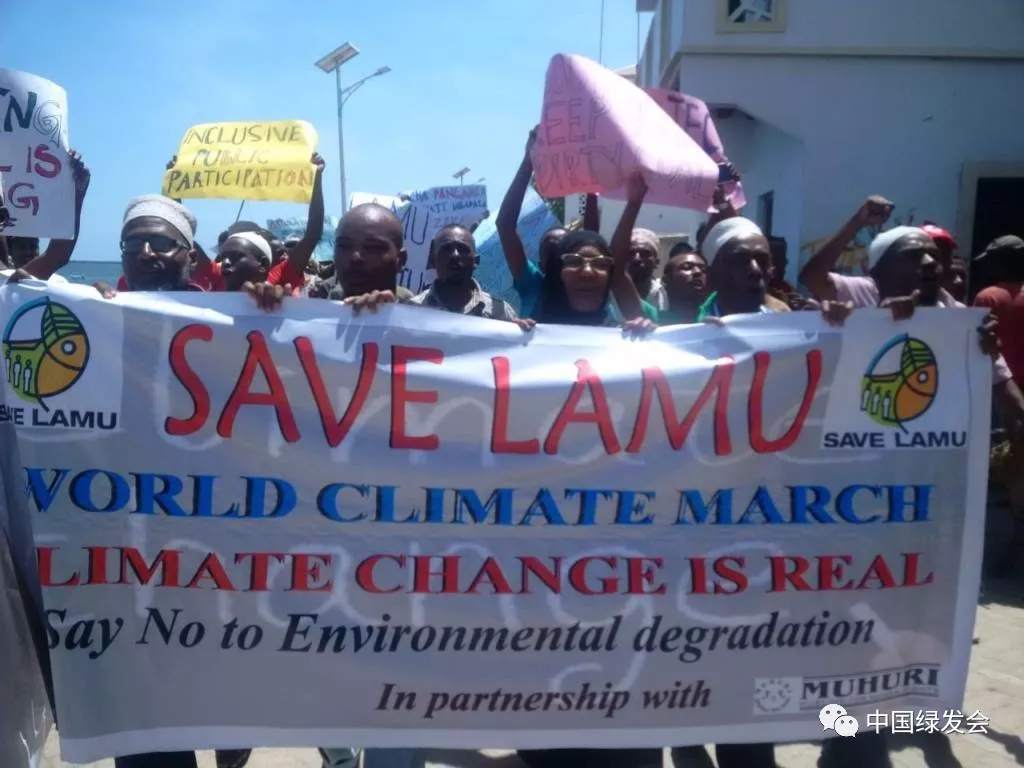On June 27, China Biodiversity Conservation and Green Development Foundation (CBCGDF) was informed that Kenya’s environmental court blocked the construction of a coal-fired power station on the country’s idyllic Indian Ocean coast, in a move hailed as a major victory by campaigners fighting a years-long battle against the scheme. A Kenyan tribunal canceled an environmental license for a planned $2 billion coal-power plant near the coastal town of Lamu, saying the developers hadn’t consulted the community. The developers will have to conduct a new environmental study and involve the public if they want to proceed with the project. “Amu Power has taken note of the concerns raised in the ruling,” the developer said in an emailed statement without giving further details.
The 1,050 megawatt project is 51% owned by Centum Investment Co. and backed by General Electric Co.’s Ultra-Supercritical Clean Coal Technology. The coal plant is part of President Uhuru Kenyatta’s strategy to increase electricity output to power the East African nation’s industrialization agenda and create jobs.
Save Lamu, a community organization, among other petitioners asked the tribunal to cancel the EIA license awarded to the project in 2016 because the plant is likely to have a negative impact on human and marine life. The petitioners said the developers didn’t consult the community during the study.
The location is the pristine Lamu archipelago, which boasts a UNESCO World Heritage Site and vibrant marine life and lives off fishing and tourism -- both industries that locals say will be devastated. Kenya's National Environmental Tribunal ruled in favour of activists who said there had been insufficient public participation in the awarding of a license to build the plant.
"Justice is served at last," said Omar Elmawi, campaign coordinator from the deCOALonize movement. "This is a big victory, this is a big day for Lamu people, it's big day for Kenya, it's a big day for Africa and it’s a big day for the world," said Mohamed Athman, a member of the Save Lamu activist group.
On the one hand, some Western media should not ignore the fact that the project is “multi-participating” and selectively insinuate the Chinese institutions, claiming that this has caused a “reputation blow” against China. Regarding this news, AFP, the Washington Post, Bloomberg and many other foreign media did not mention China at the time of reporting.
On the other hand, this news also reminded the Chinese “going out” enterprises along the “Belt and Road”. From the perspective of non-governmental organizations (NGOs), Dr. Zhou Jinfeng, the Secretary-General of CBCGDF gave relevant insights: dialogue and communication are the boosters to better achieve the “Green ‘Belt and Road’”. Dr. Zhou believes that CBCGDF has been inspired by the United Nations’ Global Compact: it organizes the related typical cases into “Cases Database” and get inspirations through “Showcasing”. CBCGDF has established a “case library” for research on related projects along the “Belt and Road”, and combs and sorts out ecological, environmental and sustainable events and issues along the “Belt and Road”. To “showcase” to the public, to provide experience, to take note of it. CBCGDF has included this case of the Kenya coal-power plant in the CBCGDF “Ecological ‘Belt and Road’” case library.
At the same time, based on personal experiences, CBCGDF has drawn some inspirations from the ruling of the Kenyan environmental court to Chinese enterprises:
First, in March 2019, when Dr. Zhou led the CBCGDF delegation to attend the UNEA4 in Nairobi, Kenya, he met the local NGO alliance in Kenya and learned about the coal-fired power station project and its risks. Therefore, it didn’t feel quite surprising when Dr. Zhou was informed of the local environmental court's ruling. CBCGDF believes that Chinese investment institutions can strengthen the mechanism of dialogue. The involvement of multi-stakeholders is important as governance of the global environment enters a new era. For cases involving the “Belt and Road” ecological conflict, CBCGDF is willing to build a platform to promote dialogue between the company and local communities, environmental agencies and stakeholders.
There is an example that happened in the past: there is an E40 waterway project in Ukraine, and the relevant local authorities have approached relevant Chinese financial institutions. Local environmental groups in Europe contacted CBCGDF and mentioned the biodiversity risks of the project. In October 2018, CBCGDF personnel went to Ukraine for a field visit and concluded that the project did have significant environmental risks. As a result, CBCGDF issued an early warning to help domestic financial institutions understand the environmental risks of the project in advance, and help investors avoid future conflicts and losses.
For this coal-fired power station project in Kenya, local environmental organizations have been eager to communicate with relevant Chinese companies, but they have failed. CBCGDF also sent letters to Chinese investment institutions and did not receive a response. Dr. Zhou pointed out that Chinese companies are still used to communicating with the government and project parties when they carry out projects abroad, sometimes ignoring the role of other stakeholders such as NGOs. In many cases, NGOs and other stakeholders can also play a significant role.
CBCGDF is willing to do a good job of communication between China's "going out" enterprises and the institutions and organizations related to eco-environmental protection and green development in the countries along the “Belt and Road”. To more and better respond to social organizations going out and serving the “Belt and Road” and the spirit of a community of shared future for mankind, to provide ecological and environmental consulting services for overseas construction projects.
Secondly, China’s “going out” enterprises should be far-sighted and conduct investigations and studies on construction projects along the “Belt and Road” in advance, especially for risk assessment in the field of ecological environment, in order to avoid environmental risks and stabilize along the road of green development.
References:
https://www.nation.co.ke/news/Lamu-coal-plant-in-limbo/1056-5172496-n50sk6z/index.html

Construction site for the Lamu coal plant. (Photo source: Daily Nation)

(Photo source: deCOALonize)

(Photo source: Save Lamu)
By / Niu Jingmei
